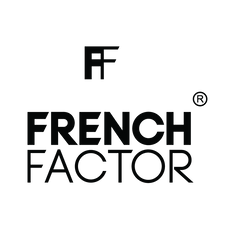
Notes
These refer to the ingredients or combinations of ingredients that make up a fragrance. For example, a fragrance may be described as having ‘floral top notes’ or simply ‘a top note of lavender’.
Soliflore
Also known as a ‘single-note’ fragrance, a soliflore is a particular type of scent that focuses on the aroma of one (usually floral) ingredient. It will contain other notes, chosen for their ability to complement the signature, but in the final compound, most will be recessive compared to the focal ingredient.
Top Notes
Top notes are the first impression of a fragrance. The first notes you smell when you’ve just sprayed. Light, bright and fruity notes are common at this level of fragrance, but when they evaporate, they give way to heart (middle) notes.
Heart Notes
These are sometimes called middle notes, and define the personality of each fragrance. They’re usually floral, as most fruity notes are too light for this layer.
Base Notes
These notes shape how the fragrance smells after it’s settled, and determine its character.
Dry Down
The lasting impression of a fragrance can be smelt after the top and heart notes dissipate. It can take 30 minutes for the dry down to become apparent, but lighter fragrance concentrations may reach their dry down sooner than this.
Fragrance Pyramid
You may have noticed that your first spritz of fragrance doesn’t smell the same as it does at the end of the day and that’s because it has a life cycle. A fragrance pyramid helps us visualise this process using triangles split into three sections ordered by the most volatile notes (the ones you smell first); at the tip of the triangle is the top notes, at the centre, the heart and at the bottom, the base notes.
Accord
In addition to its notes, you will also find fragrances described as containing accords. An accord isn’t made of just one note, it’s made up of several, which all work together to create one clear note. For example, a ‘green accord’ (with notes from leaves and grasses), or a ‘white flower accord’ (a combination of white florals). This term is also used to describe incomplete fragrances that form the fully rounded whole of the finished scent.
Fragrance Families
Chypre Fragrances
Chypre scents are traditionally mossy-woody scents, which contrast the warmth of oakmoss, sandalwood and patchouli for example, and always contain a fresh bergamot note.
Citrus Fragrances
These contain a fresh, tangy aroma of citrus notes, such as mandarin, lemon, orange, grapefruit and lime.
Classic Fragrances
These are fragrances that contain balanced notes that are typical of their fragrance family.
Floral Fragrances
These fragrances are based on floral notes. Some floral fragrances are based on just one note, such as lily or lavender, also known as a soliflore (mentioned above in the notes section). Others are complex blends of floral notes, fruits and woods.
Fougere Fragrances
The Aromatic Fougere fragrance family refers to scents based on lavender, citrus, spicy, ambery and woody notes.
Fresh Fragrances
These are the lightest and freshest scents in the fragrance family, often consisting of aquatic and crisp notes.
Rich Fragrances
These sport warmer notes like amber, woods and leather than other examples in any one fragrance family.
Oriental Fragrances
These are characterised by rich, intense notes, often based on resins such as benzoin, opopanax or tonka bean.
Gourmand Fragrances
These scents are composed of edible notes like honey, caramel, praline and chocolate.
Transparent Fragrances
Scents with light, bright notes and a clean, fresh sparkle are called transparent/ translucent scents. Top notes are often citrus-based, while heart notes may include grasses or marine aromas. These types of fragrance were very popular in the 1990s.
Aldehydes
A traditional fragrance family, based on synthetic powders that are formulated to replicate natural scents found in plants (such as Lanvin Arpege). Not so popular in perfumers today, Aldehydes capture natural aromas using headspace technology.
Fragrance Concentrations
Parfum
Sometimes called Parfum or perfume, this is the highest concentration of pure fragrance available and will be between 18% and 40% in concentration. It is a potent blend of essential oils, pure fragrance and alcohol with excellent longevity.
Eau de Parfum
Commonly known as EDP, this contains a fragrance concentration of around 10-20%. This concentration is formulated for a stronger, more enduring scent than an EDT, at a more accessible price than the Parfum.
Eau de Toilette
Otherwise known as EDT, this refers to a fragrance concentration of around 15% and is the most popular strength of fragrance available. This concentration is usually more affordable, but will only last for around 3 hours.
Eau Fraiche
These are relatively new fragrance concentrations and sometimes called a ‘perfumed mist’. Its fragrance content is relatively low compared to EDT but is usually greater than that of eau de cologne. However, typically alcohol-free and specially formulated for use in the summer.
Eau de Cologne
Eau de Colognes tend to be more uplifting and wearable as they have a fairly weak concentration of fragrance at 3 to 5%.
Aftershave Splash
An aftershave splash typically has about 3% fragrance concentration and is used for soothing skin and tighten pores thanks to its high alcohol content.
Application
Pulse points
You may have seen tips like apply your fragrance on your pulse points and there’s a good reason behind it. Body heat activates perfume and your pulse points are where the blood flows closest to the skin making it these areas hotter than the rest of your body. Examples of pulse points perfect for applying your fragrance are the neck, inside of your elbow, behind the knee and on the inside of your wrist.
Layering
Layering is the practice of wearing different levels and formulas of fragrance all at once to prolong its longevity, for example: using shower gel, body lotion, deodorant and Eau de Toilette from the same fragrance range can enhance the scent of your Eau de Parfum. Although it doesn’t have to be from the same range; pairing fragrances and body products from different fragrance ranges can create a custom fragrance that is totally unique to you.
Spritz
This is what you do with light Eau Fraiche fragrances. It refers to the practice of applying your fragrance from top to toe for all-over fragrant appeal.
Pour
A pour fragrance refers to a fragrance tipped out of the bottle rather than sprayed. Less portable and therefore not as popular as sprays, but they usually have a dry down of greater intensity than a spray.
Body Spray
A body spray is a fragrance for use all over the body.
Commonly said
Signature scent
A signature scent is usually considered someones go-to fragrance that they wear all they wear every day.
Ancillary
An ancillary is a body lotion, shower gel, aftershave or deodorant (basically any kind of body product) that contain a perfume concentration (normally 2%) used inside their matching Eau de Parfum and Eau de Toilette. They can intensify your signature fragrance, or create a custom scent when mixed with another a perfume from a different line.
Flacon
In French, this means ‘bottle’ and is used as a more refined description for the fragrance container.
Flanker
A fragrance flanker is in sorts a spin-off of a popular fragrance; it usually belongs to the same range and has similar attributes.

